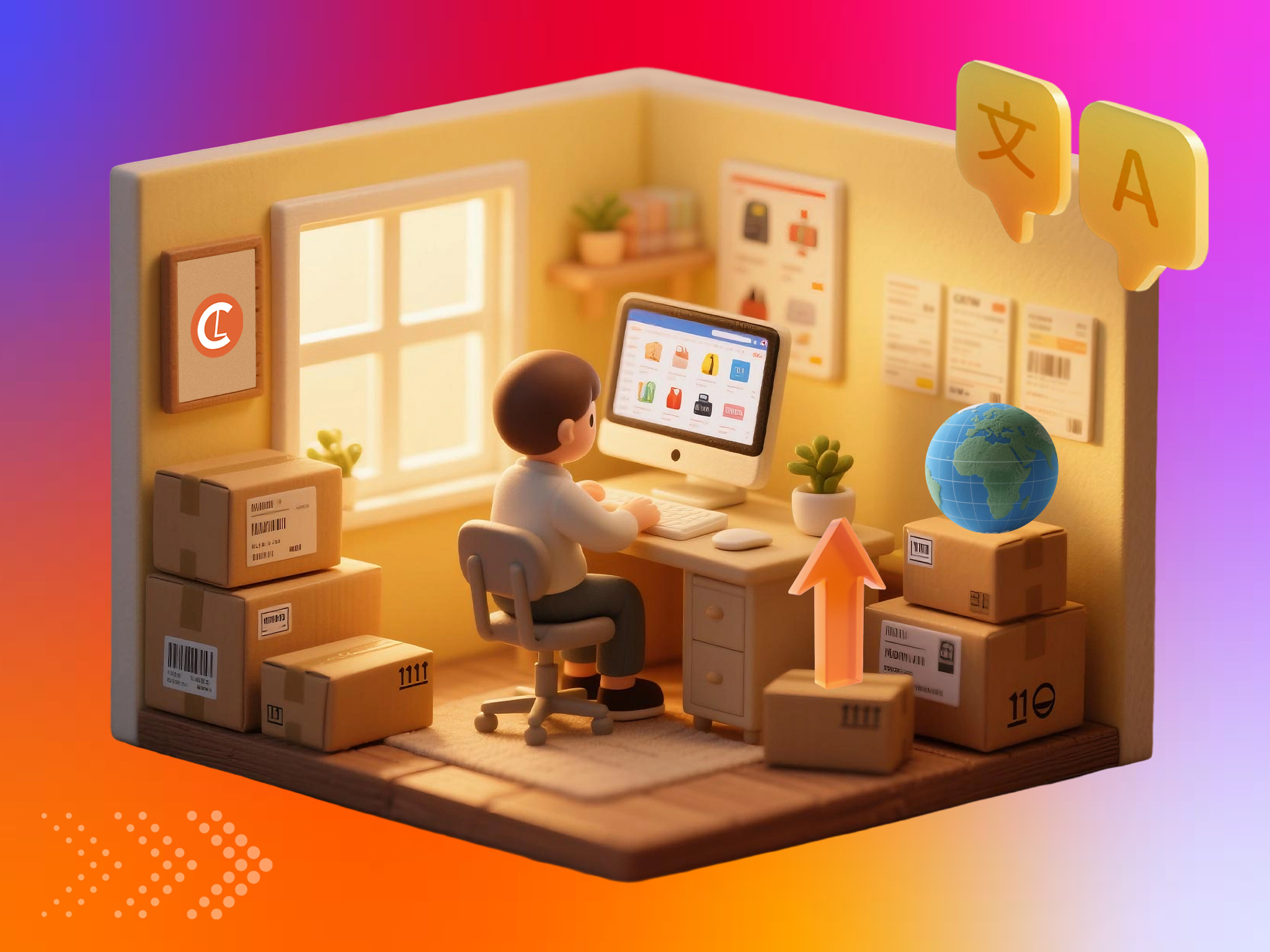For brands targeting international expansion, treating language and localization as a strategic priority delivers an immediate competitive edge. According to CSA Research, it takes just 12 languages to reach 80% of the world’s online audience. This surprising statistic reveals an incredible opportunity for businesses looking to expand internationally—even those with limited resources.
The truth is that international expansion through multilingual content doesn’t have to be an all-or-nothing endeavor. With the right strategies, even lean teams can effectively reach new markets and drive growth.
The Hidden Costs of Monolingual Content
When your content speaks only one language, you’re not just missing potential customers—you’re actively pushing them away.
For scale-ups looking to grow beyond their home markets, this language barrier creates several critical challenges:
- Limited Market Reach: Without multilingual content, you’re artificially capping your potential audience. Even if your product has universal appeal, language restrictions create an invisible wall between you and international customers.
- Reduced Conversion Rates: Even when international visitors do find your site, they’re significantly less likely to convert if they can’t understand your content. Research shows that 64% of consumers would actually pay more for products presented in their native language, demonstrating how deeply language affects purchasing decisions.
- Competitive Vulnerability: In today’s global marketplace, if you’re not speaking to customers in their language, your competitors likely are. This creates a significant competitive disadvantage that becomes harder to overcome the longer you wait.
- Stunted Growth Trajectory: For scale-ups, hitting growth plateaus in home markets often necessitates international expansion. Without a multilingual strategy, this critical growth lever remains untapped.
Efficient Strategies for Resource-Constrained Companies
The good news is that you don’t need the resources of a multinational corporation to implement an effective multilingual content strategy. Yet many companies hesitate to take the multilingual plunge, assuming that effective global content requires massive teams and budgets.
For resource-constrained scale-ups, the prospect of creating and maintaining content across multiple languages can seem overwhelming. The translation costs, cultural considerations, and technical complexities might appear insurmountable when you’re already stretching every dollar and team member to their limits. But what if you could strategically approach multilingual content in a way that maximizes impact while minimizing resource drain?
Here are proven approaches that work:
- Adopt a Tiered Language Strategy
Not all languages (or content) deserve equal investment. Clearly Local recommends establishing a clear language strategy that prioritizes markets based on business objectives and potential return:
- Tier 1 Languages: Your highest-priority markets deserve professional human translation and full localization. These might be markets with the highest revenue potential or strategic importance.
- Tier 2 Languages: For markets with moderate potential, consider a hybrid approach of machine translation with human post-editing, which can reduce costs by 40-60% while maintaining quality.
- Tier 3 Languages: For experimental markets or content with shorter lifespans, machine translation alone might be sufficient to test market response before investing further.
- Prioritize High-Impact Content First
Not all content needs to be translated immediately. Research shows that 79% of companies prioritize website materials first, followed by product information (42%) and social media content (23%).
For maximum efficiency, focus on:
- Product interface and core user experience
- High-converting marketing pages
- Customer support documentation
- Legal/compliance content required for operation
- Leverage the Right Technology Stack
Technology can dramatically reduce the resource burden of multilingual content:
- Translation Management Systems (TMS): These platforms streamline the translation workflow and maintain consistency across languages.
- Translation Memory: This technology stores previously translated segments, reducing costs for repetitive content. Surprisingly, 81% of marketers are unaware of this cost-saving tool.
- Consider Flexible Team Structures
There are several approaches to building a localization capability:
- In-house subsidiary teams: Embedding localization specialists within existing marketing or product teams
- In-house standalone teams: Creating a dedicated localization unit
- Outsourced teams: Working with specialist agencies or freelancers
- Embrace Cultural Adaptation, Not Just Translation
Effective multilingual content goes beyond word-for-word translation. It requires adaptation for cultural nuances:
- Work with native-speaking translators who understand cultural context
- Consider how visuals, colors, and symbols may have different meanings across cultures
- Adapt examples, metaphors, and references to resonate locally
While this might seem like an added expense, it dramatically improves content effectiveness and actually reduces costly mistakes.
- Foster Cross-Functional Localization Literacy
Localization is a company-wide growth lever. Secure stakeholder buy-in by proactively educating teams on:
- Why it matters: Share data on how multilingual content drives market access and revenue.
- How it impacts them: Clarify workflow requirements.
- What success looks like: Co-define KPIs with regional sales/marketing leads.
Overcoming Resource Challenges for Global Engagement
Creating multilingual content doesn’t have to be an insurmountable challenge for resource-constrained companies. By adopting a strategic, tiered approach that prioritizes high-impact content and leverages the right technology, even small teams can successfully expand into international markets.
The key is to start strategically rather than trying to translate everything at once. Begin with your highest-potential markets and most critical content, then expand gradually as you validate results and grow your capabilities. Remember that even modest investments in multilingual content can yield significant returns when approached thoughtfully.
As your company grows, your multilingual strategy can evolve alongside it—adding more languages, localizing more content types, and deepening your cultural adaptation. The companies that start this journey early, even with limited resources, gain a significant competitive advantage in the global marketplace.
Check out our Free Localization Project Checklist today, and you’ll gain clear insights into how to localize your content effectively. With the detailed information listed, we’ll deliver precisely what you need to succeed globally.



